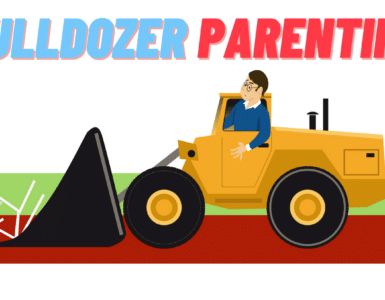There are quite a few situations as delightful as witnessing that magical moment when you hear your baby laugh for the first time. Laughing is a universal language that helps people connect, and when it comes to babies, it’s a significant milestone in their cognitive and emotional development.
Put differently, laughter is not only a sign of happiness but also an essential developmental stage of a baby’s cognition and emotion. Understanding when babies laugh and how to encourage laughter will help parents and caregivers support their little ones in reaching new milestones while fostering a strong connection.
In this article, we will explore all you need to know about babies’ laughter, what triggers their giggles, and how laughter supports their overall growth. So, let’s dive in and uncover the joyful world of infant laughter.
The Developmental Timeline of Infant Laughter
1. First Reflexive Smiles
The journey to laughter begins with a baby’s first reflexive smile, which may appear as early as the neonatal period (birth to 4 weeks). These early smiles are spontaneous and not the result of social interaction. They are often referred to as “gas smiles” because they are thought to be caused by the baby’s immature digestive system.
At around six to eight weeks of age, babies begin to develop social smiles. These smiles are a response to their environment, such as seeing their parents faces or hearing a soothing voice. This stage is crucial as it serves as the foundation for a baby’s laughter in response to the environment.
2. First Giggles and Laughter
Babies generally start to giggle and laugh between three and four months of age. It’s important to keep in mind, though, that every infant is unique, so some may start laughing before or after this window.
Laughter coincides with other critical milestones in a baby’s development. So, as long as your baby is developing in other aspects, a slight delay in laughter shouldn’t be a cause for concern.
For instance, around the same time they start laughing, babies also begin to recognize familiar faces, babble, and show improved motor skills, such as reaching for objects or rolling over.
3. Laughter Progression
As babies grow, their laughter evolves. Early giggles may be soft and breathy, while later laughter can be more boisterous and heartier. Over time, a baby’s laughter will become more frequent and complex.
They may start to laugh at a broader range of stimuli and even develop a sense of humor, finding delight in playful situations such as peekaboo or funny faces. Over time, they develop a unique laugh that reflects their personality.

What Makes Babies Laugh: Common Triggers of Baby Laughter
Babies have a natural ability to find joy in their surroundings, and giggles are just one of the few ways they can respond. While what triggers giggles in each child may differ, certain elements tend to elicit laughter in infants generally.
Understanding what makes babies laugh is a crucial step for parents and caregivers in creating an environment that nurtures a sense of humor and supports a child’s overall well-being. Here are some common triggers of baby laughter:
1. Visual Stimuli
Babies are naturally drawn to visual cues that are exciting and colorful. Some common visual stimuli that make babies laugh include:
- Funny faces: Babies love observing facial expressions, and exaggerated or funny faces can easily prompt a giggle. Funny cartoons are another example of attention-grabbing visuals.
- Peekaboo: The classic game of hiding and suddenly reappearing delight infants and helps them understand object permanence.
- Animated toys: Toys with bright colors, interesting patterns, or moving parts can engage a baby’s attention and make them laugh.
2. Auditory Stimuli
Sounds play a significant role in triggering laughter in babies. Some examples of auditory stimuli that can elicit laughter include:
- Parent’s laughter: Babies are attuned to their parents’ emotions, and hearing their parents laugh can often prompt them to join in.
- Funny noises: Making unexpected or amusing noises, like animal sounds or blowing raspberries, can intrigue babies and make them laugh.
- Playful music: Upbeat, rhythmic tunes or songs with silly lyrics can bring out laughter and encourage a baby’s sense of rhythm.
3. Tactile Stimuli
Another effective method of bonding with your child and eliciting laughter is through physical touch. Some tactile sensations that can cause laughter are;
- Tickling: Gentle tickles on a baby’s tummy, under their chin, or on their feet can lead to fits of giggles.
- Bouncing or rocking: Babies often enjoy the sensation of being gently bounced or rocked, which can elicit laughter.
- Touch-and-feel games: Engaging in games that involve touching different textures or objects can be both educational and amusing for babies.
4. Parental/Human Interaction
A child’s sense of humor is heavily influenced by their parents and other caregivers. While building a strong bond with a baby comes naturally as you nurture them, the parent-child bond is further strengthened through shared laughter and joyful moments.
This is because babies are more likely to laugh when they feel safe, comfortable, and connected to you. Playing interactive games, maintaining eye contact, and using a playful tone of voice can all help to create an environment that encourages laughter.
5. Growth
As babies grow, the things that make them laugh change. At certain developmental milestones, they become more aware of their surroundings and understand cause and effect.
This enables them to find humor in more complex situations. By adapting your play to match your baby’s developmental stage, you can keep them engaged and entertained and help them grow.

Fostering a Sense of Humor in Infants
Helping your baby develop a sense of humor is essential for their emotional, cognitive, and social development. When parents and children laugh together, it sets a joyful tone in the home and strengthens the relationships between them.
Besides improving cognitive function, fostering a sense of humor in infants helps them develop empathy and build essential social skills. Here are some suggestions and tactics to help you instill a sense of humor in your baby’s life.
1. Engage in Age-Appropriate Activities
As your baby grows, it’s essential to have them engaged in activities that are commensurate with their age. As your baby becomes more aware of their surroundings, you might start showing them puppet shows, reading them funny books, or giving them toys to play with.
Adapting your play to match your baby’s developmental stage will help them stay engaged and enjoy the experience. Here are some suggestions for age-appropriate activities:
- Newborns (0-3 months): At this stage, babies are just beginning to develop their senses. Gentle touches, soothing voices, and soft, contrasting colors can help stimulate their senses and may elicit smiles.
- Infants (3-6 months): During this period, babies are more responsive to social interactions. Play simple games like peekaboo, make funny faces, or blow raspberries on their tummy to bring out their laughter.
- Older infants (6-12 months): As your baby becomes more aware of their surroundings, you can introduce activities like puppet shows, funny books, or playful toys. Mimic their sounds and actions, and sing silly songs to keep them entertained.
2. Be a Role Model
Every child looks up to their parents as their key examples in life. By implication, your child takes after you in several ways, including the way and why you laugh. Therefore, one simple way to help your baby develop a love of humor is to laugh at yourself.
Babies learn by observing their parents and caregivers, so laughing regularly while you have them with you should become a part of your routine. Share funny stories, laugh at their playful antics, and maintain a lighthearted atmosphere at home.
Over time, they come to learn that laughter is a natural and enjoyable part of life.
3. Be Patient, Flexible, and Supportive
It takes time to help a child develop a sense of humor, so patience and support are important for their overall development. It’s important to keep in mind that every infant is different and that each one’s sense of humor grows uniquely.
All you need to do is create a nurturing and relaxed environment that allows your baby to explore naturally. Give them the chance to interact with different things, like games, toys, and you and other people, but be careful not to overwhelm them.
Also, be present and attuned to your baby’s cues, adjusting your approach as needed to cater to their preferences and developmental stage. Finally, support your baby’s attempts at humor by responding positively and enthusiastically, even if their jokes or antics don’t quite make sense to you.
This validation will bolster their confidence and motivate them to continue refining their sense of humor.
4. Explore Different Types of Humor
Exploring different types of humor is important for helping your baby develop a well-rounded sense of humor and a broad appreciation for various forms of amusement.
Introduce your baby to physical comedy, wordplay, and absurd situations as they grow, and observe their reactions to find what resonates with their personality.
This exposure not only keeps them engaged but also helps to develop their cognitive and social skills. Overall, remember that laughter is a developmental milestone, and like all milestones, it will come at its own pace.
FAQs
1. At what age should I expect my baby to start laughing?
While every baby is different, most infants begin to laugh in response to external stimuli at around three to four months of age. Mind you, this is only a general or average timeframe for when an infant should begin to laugh.
Some babies may start laughing earlier or later than this average. So, just keep an eye on your baby’s overall growth and development, and if you have any worries, talk to your pediatrician.
2. My baby doesn’t seem to laugh at the things other babies find funny. Is this normal?
Babies, like adults, have unique personalities and senses of humor. What one baby finds hilarious, another might not find amusing at all. As a parent, it’s essential to observe your baby’s preferences and adapt your approach to making them laugh.
If your kid doesn’t react to certain stimuli right away, try not to become down on yourself. Most likely, they merely have a different sense of humor or need more time to develop their senses.
3. Does culture play any role in infant laughter?
While laughter is perceived as merely natural, cultural differences can influence the way babies are encouraged to laugh and the types of stimuli they find funny.
For example, in some cultures, physical play and tickling might be more common, while in others, verbal play or storytelling could be more prevalent.
Regardless of these cultural variations, laughter remains an essential aspect of a baby’s emotional and social development.
4. My baby seems to laugh more with one parent than the other. Should I be concerned?
It’s not uncommon for babies to show a preference for one parent over the other. This preference may be related to factors such as the parent’s play style, the amount of time spent with the baby, or even the parent’s voice pitch.
It’s important not to take this preference personally and instead focus on nurturing your baby’s sense of humor by engaging in playful activities together. Over time, your baby’s preferences may shift, and they may develop a more balanced response to both parents.
5. How can I tell if my baby’s laughter is genuine or just a reflex?
During the early weeks of a baby’s life, reflexive smiles and laughter can occur spontaneously, often due to internal sensations such as gas. However, as your baby grows, genuine laughter becomes more distinct and is typically triggered by external stimuli.
Eye contact, dynamic facial expressions, and body movements are common triggers for genuine laughter. If you pay great attention to your baby and recognize these signs, you’ll be able to decipher your child’s laughter and respond appropriately.
Conclusion
Laughter is an important part of infant development, and it can have a positive impact on emotional, cognitive, and social growth.
By recognizing the nuances of how babies laugh, being receptive to their humor, and exposing them to a variety of humorous experiences, parents and caregivers can create a supportive and enriching environment that is tailored to their baby’s needs.
Patience, adaptability, and keen observation are essential to success in this endeavor, as each child’s journey to laughter is unique. Inculcate laughter in your routine, build strong relationships with your baby and enjoy the fun.










Add comment